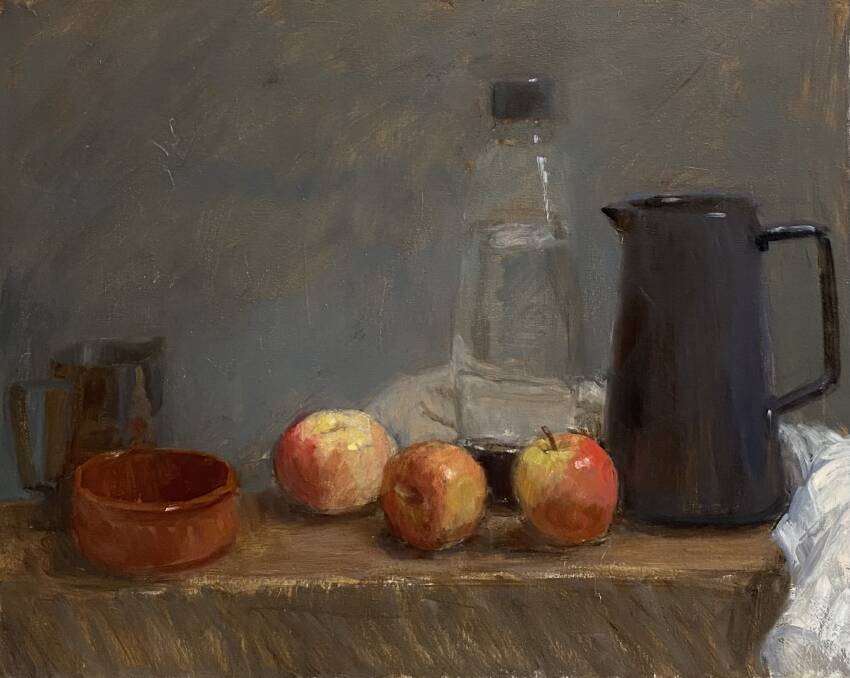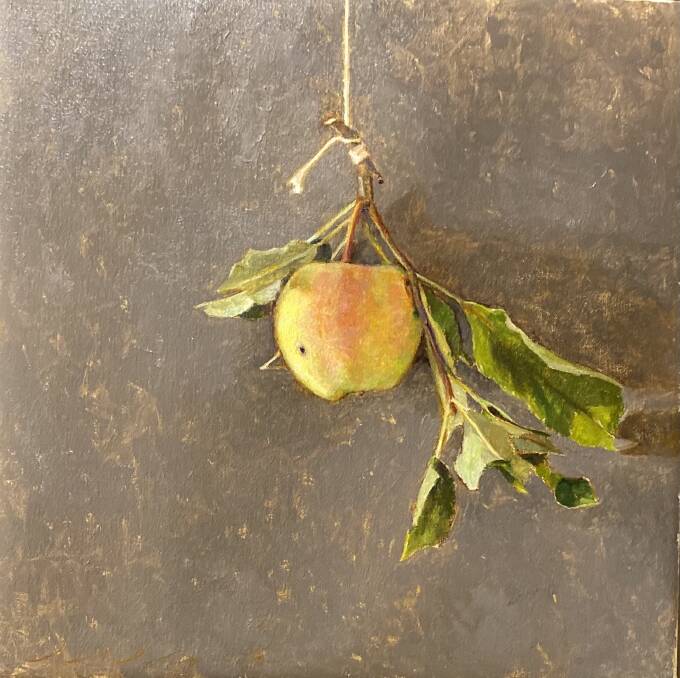
Various artists: Objets de la vie. Grainger Gallery. Studio 1 & 2, Building 3.3, 1 Dairy Road, Fyshwick. Wednesday-Sunday 11am to 5pm. Until May 9, 2021.
Subscribe now for unlimited access.
or signup to continue reading
Objets de la vie is a very full exhibition. More than 100 works by 22 artists (from Sydney, Canberra, Queensland, and the central and south coasts of NSW), populate the gallery's spaces in an exuberant celebration of (for the most part) the still life genre. I say "for the most part" because there are a number of works that are certainly not still life and their inclusion, despite the quality of most of them, is at the least an idiosyncratic choice and at the most an undermining of the exhibition's ostensible theme. The exhibition title (Objets de la vie) is a linguistic tilt at the French term for still life, nature morte (literally "dead life"). Here "objects of life" is a more explicit cue into the celebratory character and tone of the exhibited works.
The majority of the works are in oils, with the remainder a mixture of acrylics, giclée prints and a singular set of ceramic examples. Flowers in numerous guises predominate and those of us familiar with the long history of the still life in the Western tradition would expect this.
Also to be expected with the number of artists is a cornucopia of stylistic approaches, and viewers will not be disappointed by the range and variety presented.
A number of artists look to historical precedents as a starting point for their pictorial language. Maria Gravias has clearly absorbed the example of the Dutch still life of the 17th and 18th centuries. There is also in her dramatically lit compositions evidence of a familiarity with the use of light in the paintings of Caravaggio. Contrasting textures and surfaces in her exquisitely contrived tondi carefully capture the richness of the objects depicted. The black backgrounds and white frames move her images from the historical to the contemporary. A suite of 10 at the top of the stairs to the upper gallery is an especially effective visual element.
Matilda Michell's works also honour the history of the still life. The Dutch tradition is honoured in, for example, the inclusion of glass bottles, whose transparency and light-filtering qualities are beautifully evinced in her work. While the symbol-laden Dutch images may have provided historic precedents, Michell's works acclaim the beauty of the everyday and the simple pleasures of life and in these look back to the 19th century and the example of French artist Fantin-Latour comes to mind. Michell's works are also concerned with celebrating the activity of painting. This is clearly seen in the manner in which she allows the application of brushstrokes to be overtly visible to viewers.

The activity of painting is central to the work of a number of other artists. While this may seem a self-evident truism, it holds a special resonance in, for example, the work of Alison Mackay. Like Michell she celebrates the quotidian, the everyday activities and surroundings that are often taken for granted. The activity of producing the work of art is as important to her as the finished product. The celebration of the one is a celebration of the other. I was particularly taken by the two works from the Souvenir Teaspoons series. Using a vertical screen format with strong reverberations of Oriental paintings, the artist depicts groups of spoons tumbling down the surface of the canvas ostensibly in free fall, but beautifully contained in a marvellously painterly gesture.
Other artists whose works exalt the painterly surface include Jessica Ashton, Colleen Stapleton, Vanessa Stockard and Sophie Gralton.
The use of pattern is given joyous expression throughout the exhibition in the works of a number of artists. Examples include Kobie Bosch's vividly energetic compositions, Kate Nielsen's "tablescapes" bursting forward into the viewers' space and Bethany Saab's intimate glimpses into personal spaces. Perhaps the work that encapsulates both the history of the still life and its ongoing contemporary relevance is Ann Maree Clark's simply beautiful yet highly evocative Study of an Apple II. Here the fragility of life and its fugitive pleasures (such as eating an apple), simply pictorialised in atmospheric tonal warmth, offer aesthetic, emotional and intellectual repose. There is much to see and enjoy in the visual abundance that is Objets de la vie.

